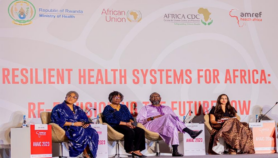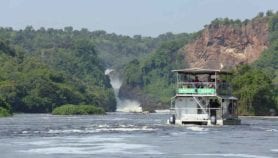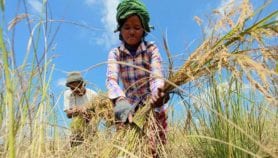By: Tenzin Namgyel
Send to a friend
The details you provide on this page will not be used to send unsolicited email, and will not be sold to a 3rd party. See privacy policy.
[THIMPHU] Four South Asian nations that are vulnerable to the impacts of climate change in the Himalayas have drawn up a joint adaptation plan on sustainable food production, access to clean energy and safeguarding local biodiversity.
At the conclusion of a two-day ‘Climate Summit for a Living Himalayas’, on 19 November in Thimphu, the four participating countries — Bangladesh, Bhutan, India and Nepal — agreed on a framework of cooperation that addresses climate change issues over 10 years in the eastern Himalayas; including glacier melt and resulting floods.
The strategy follows a statement adopted during the 16th summit of the South Asian Association for Regional Cooperation, held in Thimphu on 29 April 2010, which set the stage for a common position on technology transfer and financing for mitigation and adaptation in international climate talks.
The strategy includes alternative technologies to ensure food and energy security and preserving the natural freshwater systems of the Himalayas.
Executive secretary of the Bhutan climate secretariat, Tashi Jamtsho, said while the 2010 Thimphu statement did not have a proper implementation mechanism, the new framework “has a mechanism to implement objectives laid down.”
The framework agrees on sustaining food production, use of appropriate technologies to improve water use, access to affordable cleaner energy resources and promoting value-added technologies for efficient utilisation of biological resources, he said.
Proposed activities include exchange of information on trans-boundary pests and diseases, including weeds, livestock and fish; promoting equitable access to nutritious local food for vulnerable communities and transfer and sharing of post-harvest technologies for processing, handling and storage.
The framework also provides for a platform for exchange of scientists, students, and farmers.
Other proposals include promoting traditional and modern water conservation techniques, enhancing ecosystem management practices and networking of national centres of learning for capacity building.
On the energy front, it includes diversifying energy sources and exploring opportunities for regional connectivity of electricity and natural gas grids.
The strategy also includes activities in the biodiversity sector, identifying potential community conservation areas, setting up a network of gene banks and promoting value-added and alternative technologies for efficient utilisation of biological resources.
“To implement it all nodal agencies nominated by each partner country should design a project and put a proposal in a coordination meeting,” Ngawang Norbu, convenor of Bhutan’s climate secretariat, said.
Link to the ministerial statement at the Bhutan Climate Summit:













